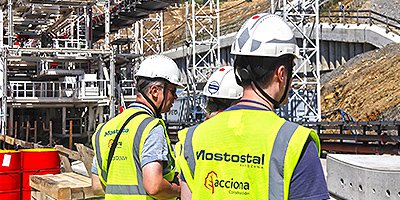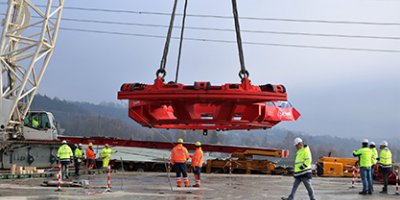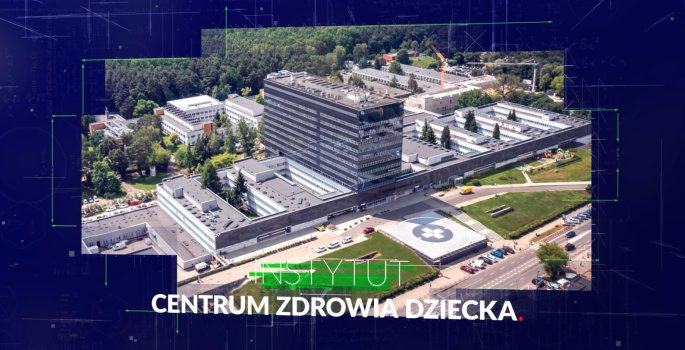80 years of Mostostal Warszawa: the turning point of the 1970s and 1980s
Our journey through eight decades of Mostostal Warszawa’s history continues. In this series marking the company’s 80th anniversary, we recall the most significant moments, projects, and events that not only shaped the company’s position but also helped define the landscape of Polish construction. Today, we return to the late 1970s and early 1980s—a period of dynamic growth, bold projects, and international expansion.
1973: international expansion
In the early 1970s, Mostostal Warszawa entered the international arena. It was during this time that the company began undertaking projects outside Poland. Mostostal operated not only in both parts of then-divided Germany but also in many other countries—from the former USSR, Libya, Czechoslovakia, Hungary, and Syria to Sweden, Norway, Finland, Switzerland, and Mexico.
Among the completed projects were the assembly of massive liquefied gas tanks in West Berlin, steel structures for power plants in Munich, boiler installation in Brilon, construction of waste incineration plants in Weissenhorn and Basel, as well as work in Opel and Ford automotive plants.
In Libya, Mostostal became a leader in oil pipeline assembly, while in Syria the company built a monumental sports stadium.
One of the most spectacular achievements of this era was the construction of the steel framework for one of Europe’s tallest buildings—the 299-meter Commerzbank Tower in Frankfurt am Main, designed by the renowned architect Sir Norman Foster.
This expansion into foreign markets cemented Mostostal Warszawa’s reputation as a company of international prestige and top-level expertise.
1974: The Royal Castle
Just a year later, Mostostal Warszawa took part in one of post-war Poland’s most symbolic projects—the reconstruction of the Royal Castle in Warsaw.
Destroyed during World War II, the castle had long remained a silent witness to history. Following the 1971 decision of the Polish Parliament to rebuild it and the establishment of the Civic Committee for Reconstruction, Mostostal had the honor of contributing to this extraordinary project.
In July 1974, the castle was rebuilt to its shell stage, faithfully restoring its pre-war form—a symbol of the reborn capital and the nation’s enduring memory.
1975: The Łazienkowska Route
In 1975, Warsaw celebrated one of the most spectacular events of the decade—the opening of the Łazienkowski Bridge. The four-day celebration coincided with the 30th anniversary of the Polish People’s Republic.
The construction of the bridge and the 11-kilometer Łazienkowska Route was the largest urban road investment of the era, permanently transforming the city’s transport infrastructure.
The project even found its place in popular culture—featured in the media and immortalized in the cult TV series Czterdziestolatek (The Forty-Year-Old), starring engineer Stefan Karwowski.
1977: The Children’s Memorial Health Institute
Another milestone was the construction of the “Children’s Memorial Health Institute” (Centrum Zdrowia Dziecka). This modern hospital, inspired by the best international examples, was designed to provide comprehensive care for young patients and to symbolize compassion for children—including those affected by the war.
Today, the Institute remains one of Poland’s leading pediatric centers, recognized both domestically and abroad.
1979: The Rotunda
Mostostal Warszawa also played a role in shaping Warsaw’s modern urban fabric, including the development of the so-called Eastern Wall (Ściana Wschodnia)—a complex featuring the Centrum Department Stores and the city’s first high-rise buildings.
A special place in this story belongs to the Rotunda, the distinctive circular building designed by Jerzy Jakubowicz. After a tragic gas explosion in 1979 destroyed 70% of the structure, Mostostal immediately undertook its reconstruction. Within a year, the Rotunda was back in service, rebuilt in a more modern form—with a glass façade that became one of the symbols of post-war modernity in Warsaw.
1983: The Metro
On April 15, 1983, construction of the Warsaw Metro began with the driving of the first steel pile in Ursynów. Mostostal Warszawa was involved in the design and outfitting of stations on the section from Centrum to Kabaty—including Wawrzyszew, Stare Bielany, and Słodowiec—as well as in the connecting tunnels.
The metro’s construction remains one of the most significant infrastructure projects in the city’s history and a testament to Mostostal’s expertise in complex underground engineering.
1989: Systemic changes
The year 1989 brought profound transformations. With the dissolution of the state construction conglomerate (Zjednoczenie), its subsidiaries became independent enterprises. Among them was the Warsaw Company for Steel Structures and Industrial Equipment “Mostostal.”
The new economic reality opened entirely new paths for development—ones that we will explore in the next part of this anniversary series.
Graphics: MW.



